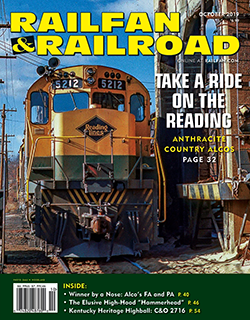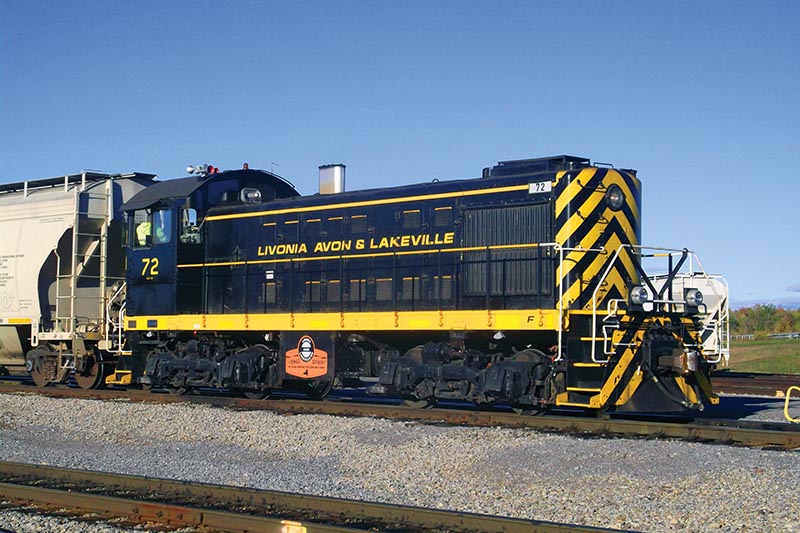 Of all the types of locomotives that have ever been built, it is probably the switcher that holds my interest the most. Part of this comes from my love of urban switching districts, the places where leads and spurs twist and turn in canyons of concrete and brick and steel. I also love switchers because of their small size and their typical design of a long “hood” with a cab at one end, a layout that descends directly from that of the steam locomotive. In many ways, the switcher is a living example of railroading at its most traditional.
Of all the types of locomotives that have ever been built, it is probably the switcher that holds my interest the most. Part of this comes from my love of urban switching districts, the places where leads and spurs twist and turn in canyons of concrete and brick and steel. I also love switchers because of their small size and their typical design of a long “hood” with a cab at one end, a layout that descends directly from that of the steam locomotive. In many ways, the switcher is a living example of railroading at its most traditional.
Manufacturers like EMD and General Electric have long since dropped switchers from their catalogs. While a few smaller builders are offering newer models, there simply isn’t the demand there once was. Railroads are closing classification yards to increase velocity, while industrial parks are closing down and fewer local runs are required. The work once performed by switchers is now assigned to older road locomotives on their last legs.
The switch engine was ubiquitous, and one of the most popular and important models was the diesel-electric S-series produced by the American Locomotive Company from 1940 to 1960. The first two models, the S-1 (660 hp) and the S-2 (1,000 hp), had a combined production run of just over 2,000 units, making them a smashing success. The advantages were many. They were small and light. They required no tender, so they were shorter and had far better visibility than most steam switchers. Because they did not produce steam and soot, they could run even in urban areas with “smoke bans” in effect. They were pragmatic, reliable, easy to operate, and tough workers. The railroads quickly took advantage of this new technology, ushering in an era of dieselization of yards and their associated downtown switching districts.
In the railroad world, a good thing usually lasts a long time, then rapidly fades away right before your eyes. So it was for these Alco switchers. By the time the last S-6 left Schenectady in 1960, freight cars began to balloon in size and weight, and the smaller and less powerful early Alco switchers began to strain. The railroads began to cast off their Alco switchers in favor of newer models up to the task of modern railroading.
Alco’s shutdown in 1969 might have been the end of the S-series altogether; instead came a reprieve. Throughout the 1960s and 1970s, many short lines began to purchase used Alco switchers. These secondhand units endured, holding down job after job on the smaller railways of the continent well into the 1980s and sometimes beyond.
And after this? Yet another life. Many large industries — especially grain elevators — need to move cars for loading and unloading, not the kind of job for which a brand-new engine is needed. The veteran Alco switchers were perfect for the task, surviving in lease fleets from coast to coast well into the 21st century.
Time may finally have run out, however. Trackmobiles and other car movers have become ubiquitous, and there are now enough of them on the used market to drive prices down. Parts for vintage Alcos are getting scarcer, sidelining many operational units prematurely. Long after the railroads and grain elevators stop calling, many units will enjoy a third career in preservation, such as Lehigh & New England 611. Thanks to museums and tourist railroads, we’ll most likely enjoy the burble of surviving Alco switchers for some years to come.
—Consulting Editor ALEXANDER BENJAMIN CRAGHEAD is a transportation historian, photographer, artist, and author.



